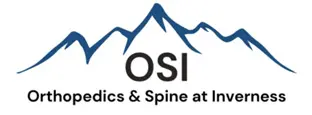Shock-Wave Therapy
What is Shock Wave Therapy?
Extracorporeal Sound Wave Treatment (ESWT) is a well-tested and clever way to treat soft tissue injuries without direct interventional treatment. It is commonly used for the treatment of soft tissue and bone disorders around the hip, knee, shoulder, elbow and foot.
How does Shock Wave Therapy work?
Essentially, the sound wave, which has no electrical current,takes a chronically dormant and injured cell and converts it to an acutely injured cell, causing it to rebuild. The sound wave causes an increase in blood flow and metabolic activity around the site of injury and stimulates the body’s natural self-healing process. The shock waves break down injured tissue and calcifications in the area.
The break-down of scar tissue is the key to why shock wave therapy is so effective. Unlike normal elasticated tissue, scar tissue is non-elastic and will prevent normal movement and function. The scar tissue weakens the unaffected tissue surrounding it, often causing further damage and pain. By increasing circulation and breaking down scar tissue, shock wave therapy will stimulate cell regeneration and promote normal healing and rapid reduction of pain. Normal function can then be restored.
What are the benefits?
- No anesthesia
- Non-invasive
- No medication
- Fast treatment (~15 mins per session)
- 3+ sessions required
- Fewer complications
- Significant clinical benefit often seen 6-8 weeks after treatment
What results are expected?
Extracorporeal shockwave treatment (ECSW) is also called extracorporeal pulse activation technology (EPAT) and has been well tested. It has shown short-term results between 56% and 91% success rate in the treatment of multiple musculoskeletal conditions and may eliminate the need for surgery. The first medical treatment utilizing shockwave included lithotripsy which dissolved kidney stones without surgery. This technology is still used today on the majority of patients with kidney stones. In the early 1990’s, this treatment was expanded to treat soft tissue injuries such as inflammation to ligaments and tendons and use for shockwave therapy has grown ever since. It has been evaluated and approved by the FDA.
What is the treatment like?
Most patients require about 3 treatments and it is commonly done without anesthesia in our office. The sessions are spaced 1 week apart and last about 10-15 minutes. Gel will be applied to the affected area. Then, using a hand-held device, we start with a lower energy and gradually increase through the 6000-pulse cycle. Most patients tolerate this treatment well and describe it as a mild diffuse soreness or mildly uncomfortable. The soreness may last for a few hours up to 24 hours after treatment. Bony prominences are more uncomfortable than well-padded areas. Some patients may notice some skin redness or bruising to the treated area. There are no side effects to shockwave therapy.
Are there any limitations after treatment?
There are very minimal limitations after the treatment and patients and athletes can go back to reasonably normal activity. However, the treatment will cause an inflammatory response and therefore anti-inflammatory medication such as Advil, Motrin, Ibuprofen and Aleve cannot be utilized. Applying ice to the affected area after treatment is also not recommended, also due to the anti-inflammatory effect that icing provides.
When will results of the treatment be noticed?
Patients tend to notice an improvement in their symptoms almost immediately. The maximum relief is usually felt 12 weeks after the last treatment and can take up to 4 weeks for pain relief. Most of the healing occurs between week 6 and 9.
What is the cost of Shock Wave Therapy?
The cost for three treatment sessions is $750. This typically NOT covered by insurance.
Are there any contraindications?
If any of the following apply to you, please notify your clinician prior to any treatment:
- If you are taking Coumadin/warfarin
- If you are pregnant or trying to conceive
- If you are under 18 years of age
- If you have nerve or circulation disorders
- Infection at/near treatment area
- It should not be used over metal pins or plates
- It should not be used over areas of carcinoma or tumor growth




